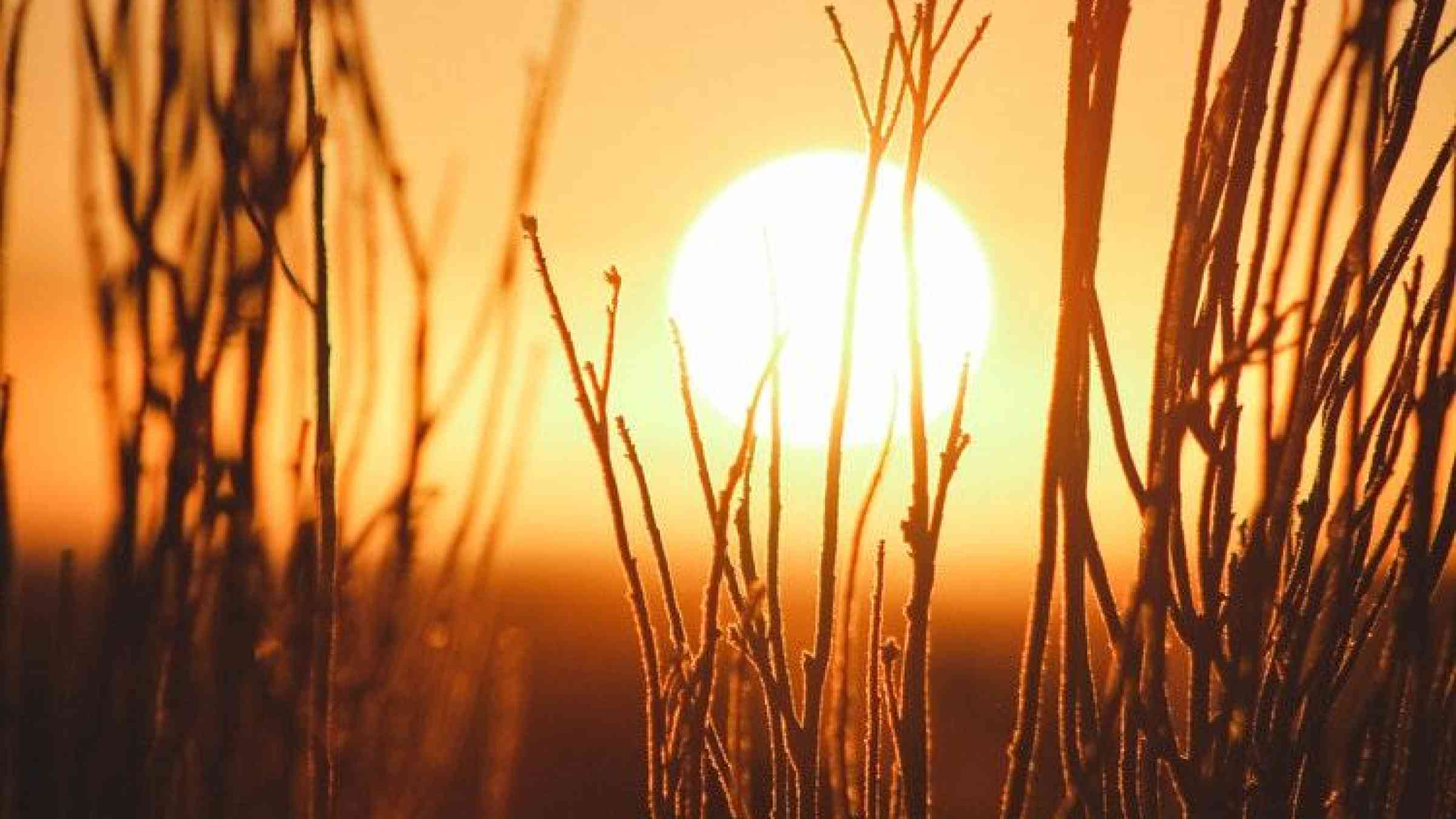Please help us improve PreventionWeb by taking this brief survey. Your input will allow us to better serve the needs of the DRR community.
Heat waves will soon be the new normal

By Patrick Monahan
Paper by SF State biologist reviews the impacts of extreme heat on humans and wildlife
Climate change is often talked about in terms of averages — like the goal set by the Paris Agreement to limit the Earth’s temperature increase to 2 degrees Celsius. What such numbers fail to convey is that climate change will not only increase the world’s average temperature, it will also intensify extreme heat waves that even now are harming people and wildlife, according to a recent review paper by San Francisco State University Professor of Biology Jonathon Stillman.
“Summertime is quickly becoming a deadly season for life on Earth,” he wrote in the paper.
Heat waves have already produced striking images of mass mortality in animals, from the bleached skeletons of corals across swaths of the Great Barrier Reef to the deaths of horses during Australian summers. Heat stroke from such extreme events is also a present danger for people, especially the elderly, albeit in a less obvious form. “Human mortality is different in that a lot of it is not visible in that way. It’s happening in homes or in doctors’ offices, but it’s striking all the same,” Stillman explained. For instance, a 2003 heat wave in Europe killed more than 70,000 people across the continent.
To get a comprehensive view of the effects of future heat waves on humans and wildlife, Stillman gathered information from over 140 scientific studies on the topic. He published the resulting review in the journal Physiology last month.
As carbon dioxide and other greenhouse gases in the atmosphere trap heat and raise the Earth’s average temperature, the heat waves we’re accustomed to will worsen and become more frequent. In some more extreme projected scenarios, temperatures rivaling or exceeding those seen in Europe in 2003 could last as much as four times as long by the end of the 21st century.
“This suggests that [during some years], all summer long we’ll have heat that’s more intense than what happened in 2003,” Stillman said.
There are ways to cope with heat waves, but they won’t be available for everyone, or for every species. A lack of available infrastructure may make migrating to cooler climates difficult for many vulnerable human communities and cause large-scale conflict. And thanks to humanity’s sprawling ecological footprint, many animals won’t have a clear path to cooler habitats unless natural space is specifically set aside for that purpose.
Heat waves can also have more subtle effects on the bodies of animals, such as prompting increases in the amount of specialized proteins that protect other molecules from the warping effects of heat. “If populations of wildlife are experiencing more near-lethal temperatures, you won’t see mortality but you might see shifts in their physiology that show they’re getting close to mortality,” Stillman explained. By studying responses like these, scientists could potentially get an early warning signal before heat waves start to produce more dire consequences. Some of Stillman’s own research deals with these sorts of physiological responses to make predictions about how climate change will affect marine species and ecosystems.
As for when these extreme events will occur and just how extreme they’ll be, predictions vary. “We can’t say it’s going to happen next year,” said Stillman. “But if we continue on the current carbon trajectory, by the end of this century we’re going to see heat waves that will dwarf those that have killed huge numbers of people and wildlife.”
Explore further
Please note: Content is displayed as last posted by a PreventionWeb community member or editor. The views expressed therein are not necessarily those of UNDRR, PreventionWeb, or its sponsors. See our terms of use
Is this page useful?
Yes No Report an issue on this pageThank you. If you have 2 minutes, we would benefit from additional feedback (link opens in a new window).